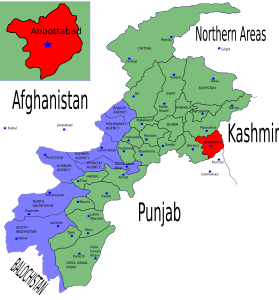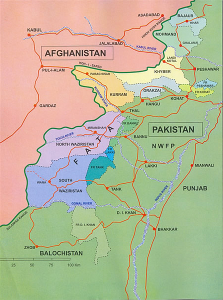Signs of Intelligence Sharing Give Way to Call for “Divorce”: US-Pakistan Relations Continue Extreme Swings
[youtube]http://www.youtube.com/watch?v=FqJPYlu8qls[/youtube]
Back on August 2, I noted a very interesting development. At a time when the US and Pakistan were holding high-level meetings both in Washington and Pakistan, a terror plot in Afghanistan reported to be in preparation by the Haqqani network was disrupted. This was a surprising development to me because at the time I was predicting that the talks between the new head of Pakistan’s ISI and CIA head David Petraeus would go badly and that the US would launch poorly targeted drone attacks in retaliation, perhaps even while General ul-Islam was in transit back to Pakistan. Instead, there seemed to be a distinct possibility that Pakistan had provided intelligence on movement of Haqqani network members from Pakistan into Afghanistan and that this intelligence allowed the plot to be disrupted before it was carried out.
Once the meetings in Washington ended, no new drone strikes occurred in Pakistan. In fact, another attack plot was thwarted in Afghanistan on August 12. Although this plot was not believed to be at the hands of the Haqqani network, there was evidence that Pakistanis were involved, which again led me to postulate that this plot also was disrupted with the help of intelligence information from Pakistan.
The absence of drone strikes continued and then on August 13 Defense Secretary Leon Panetta was interviewed by Lolita Baldor and Robert Burns of AP. As seen in the video excerpt above, Panetta said that he expected Pakistan to launch military operations soon against Taliban militants in Pakistan’s Federally Administered Tribal Areas. As Bill Roggio noted at Long War Journal, this was a shocking development. After opening with “This is absolutely stunning”, Roggio went on to list his reasoning for why the announcement didn’t make much sense. He concluded:
How many times has Pakistan promised to take action in North Waziristan, or claimed to take action there, only to make fools of top US defense officials?
The lull in drone strikes continued.
Did the US lose patience with Pakistan’s promise to launch an operation in North Waziristan? On August 18, the lull in drone strikes ended (don’t bother looking this or any other drone strike up in New America Foundation’s database, as it now appears to have been taken down). And it ended in a particularly ugly way, at midday on the day when the religious feast of Eid al-Fitr would begin at sunset. That strike has been followed up with three others, so that as of Tuesday, there were four drone strikes in as many days. The lull does not match up with Ramadan. Ramadan started on July 20 and The Bureau for Investigative Journalism’s database shows attacks on July 23 and July 29. Instead, that last strike prior to the lull was just before ul-Islam’s meetings in Washington, which started on August 1.
This sequence of events suggests to me that if there was indeed a time of increased cooperation in which ISI shared intelligence on movement of militants from the tribal areas into Afghanistan for attacks in return for no drone strikes occurring, this agreement has now fallen apart. The intense rate of drone strikes once they re-started is typical of US actions when retaliation is desired. It would not be surprising, then, for the next attack by militants moving from Pakistan to Afghanistan to be successful instead of being disrupted before it can take place.
It appears that I am not alone in thinking we are again at a low point in US-Pakistan relations. Former Pakistani envoy to the United States Hussein Haqqani suggested yesterday that the US and Pakistan should “divorce”. This latest outbreak of drone attacks could then be seen as the US serving notice of separation.


